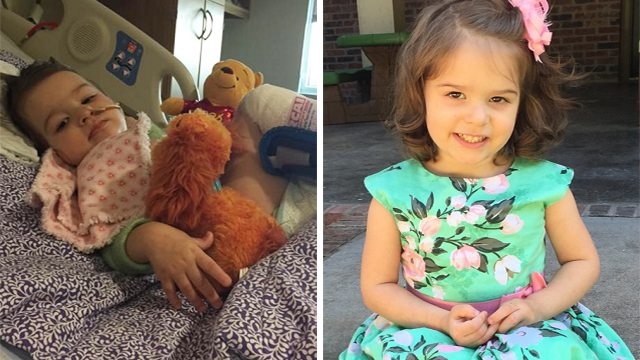After two-year-old Eden Carlson of Arkansas nearly reached complete death by drowning in 2016, her parents were told she'd be in a vegetative state for the rest of her life. She was even ensconced at home with her own feeding tube.
We are happy to report that the now three-year-old girl is now enjoying a happy, energetic and talkative childhood thanks to the alternative treatment called hyperbaric oxygen therapy (HBOT).
You may have heard of this treatment being used for Lyme disease, autoimmune disease, mystery illness, sepsis and more. Oxygen therapy is being hailed as a regenerative approach to speed recovery.
The case of Eden Carlson is one of the first medically confirmed cases of complete reversal of brain damage caused by near-drowning.
UPI describes what happened when Eden was finally discovered face down in the swimming pool one day before the age of two:
"It took 100 minutes of CPR at both the house and the emergency room to get a return of circulation," [Dr. Paul Harch] said. "And when they did, she had lab values that you rarely see in a living human being."Under Dr. Harch's guidance, the family traveled to New Orleans to receive hyperbaric oxygen treatments, "the most misunderstood therapy in the history of science," he said. He had been brain damaged 78 days after the drowning before starting treatments.
MRI scans revealed significant brain injury. Her brain had started to shrink. She was losing both gray matter - critical to muscle control, sensory perception and speech - and white matter, the network of central nervous system wiring that makes up the lion's share of the brain.
Over the next two months, Eden progressively lost muscle control as well as her ability to speak, walk and respond properly to commands.
He remarked on the tissue recovery from HBOT and said:
Every time you [have HBOT], we are manipulating gene expression in a beneficial way, inhibiting cell death and inflammation while promoting tissue growth and repair.She had 40 sessions at 45 minutes each, five times a week. Eden's mother marveled at the girl's "near-normal" state at just 10 sessions. She was walking! And talking! "Quantum improvements," Harch said.
The shrinkage of her brain had regrown.
Harch says this is almost never seen and cautions that this is just one case report published in the journal Medical Gas Research. Age is not the important factor - the time of intervention is, he said.
"In fact, there are now four other trials that have come out, all in adults, that indicate that you can reduce the death rate of acute brain injury patients by nearly 50 to 60 percent if you apply this in the first week after injury," Harch added.
Now that it is 2017, it's about time we break some more medical limitations of thinking and start reviving victims of accidents like drowning.




Comment: